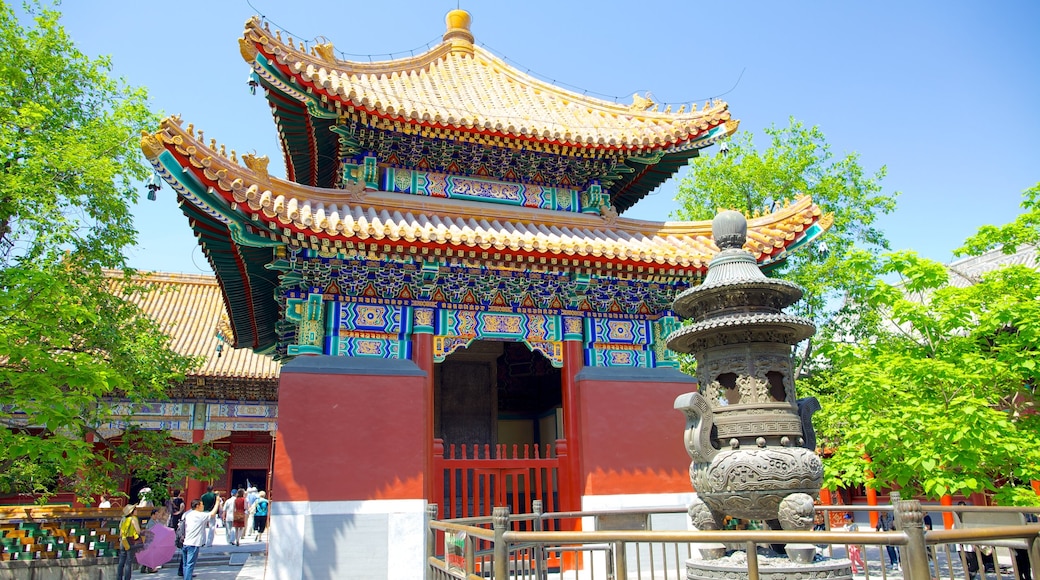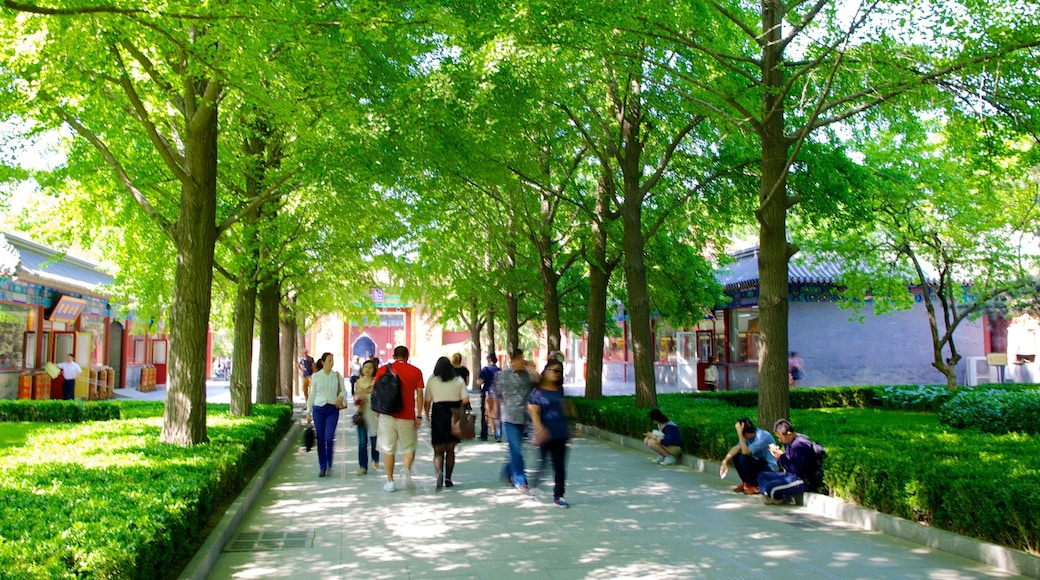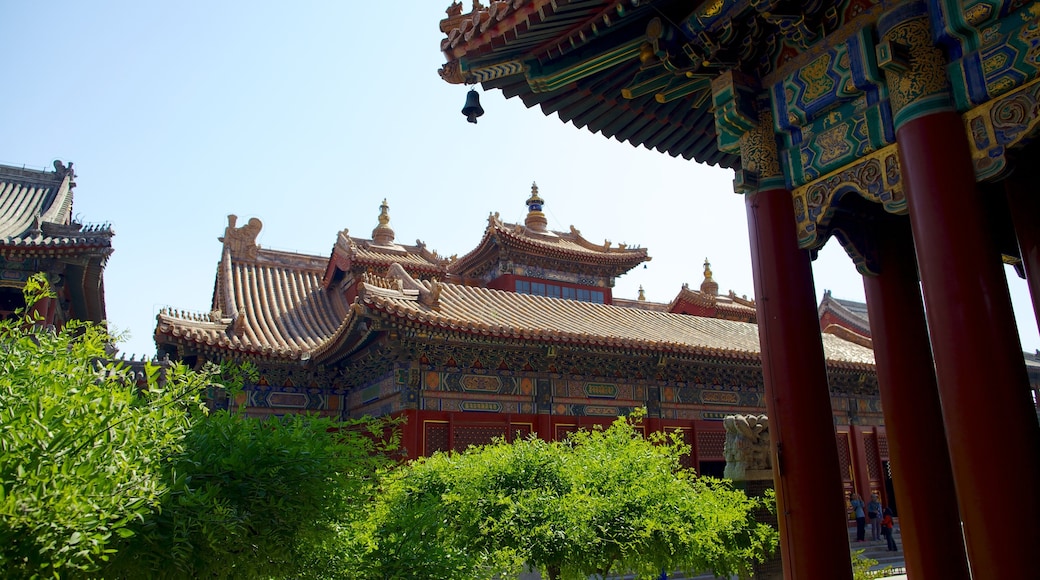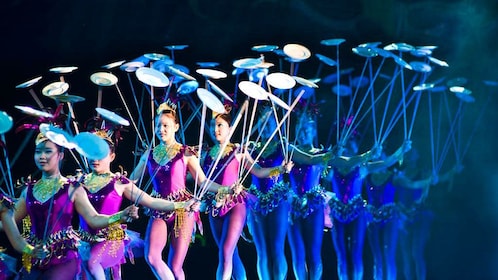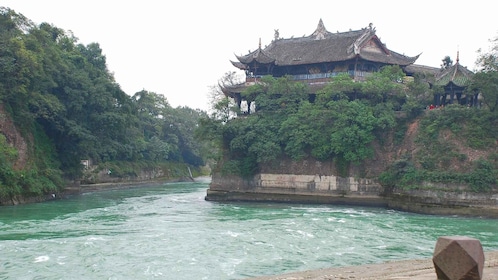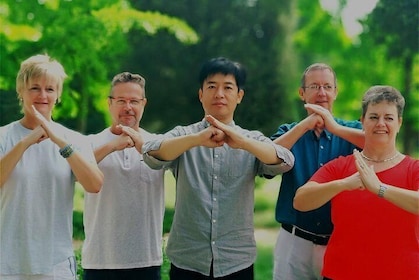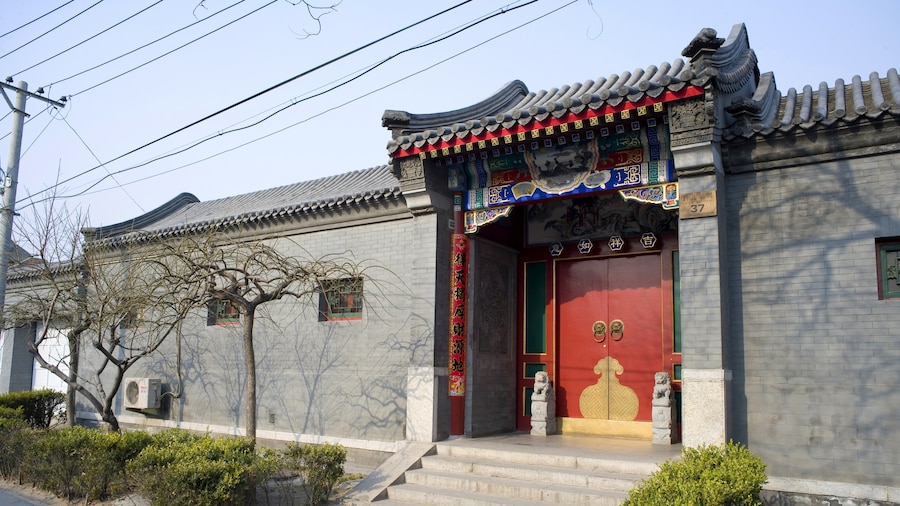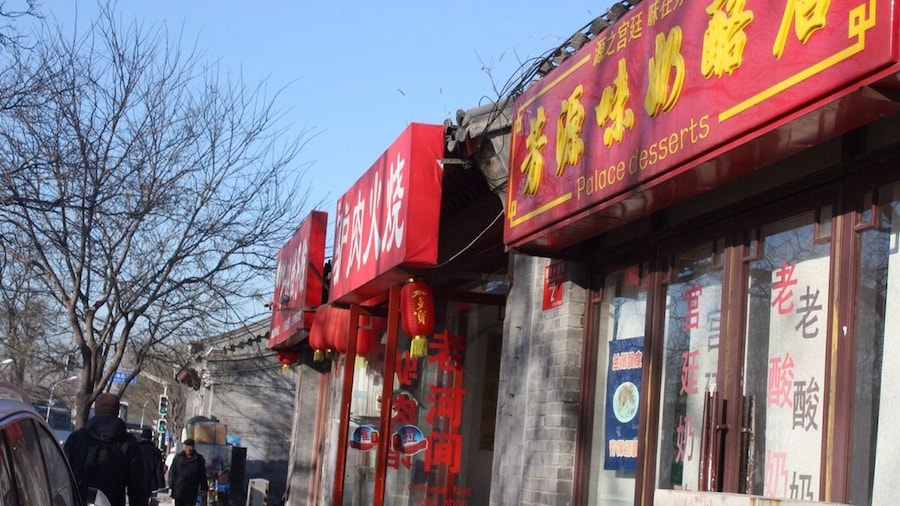Step inside to be welcomed into the peace and stillness of a working Buddhist monastery.
Formerly a royal palace from the Qing Dynasty, the Lama Temple was converted into a monastery in the eighteenth century and is now an important centre of Buddhism in China. Following the Geluk school of Buddhism, the temple welcomes monks and pilgrims from throughout Tibet and Mongolia.The temple complex is made up of five individual buildings interlinked by a series of serene courtyards and peaceful sanctuaries. Although it is an active monastery, visitors are welcome here and it is a wonderful way to discover more of China’s older spiritual side.Allow yourself to be drawn in by the smells of burning incense and rhythmic chanting of the monks, creating a mystical atmosphere as you make your way through the brightly coloured shrines and beautifully decorated chambers. Admire the intricate decor as you pass beneath archways embellished with dragons and flowers. Look out for the yellow tiles which signify the temple’s designation as an imperial structure.The buildings fuse Han Chinese and Tibetan styles in their architecture and artwork, displayed to perfection in the Hall of Harmony and Peace which contains an intricate mural of Avalokiteśvara, a bodhisattva who embodies ultimate compassion. Each of the five halls houses a Buddha statue, with the largest residing in the Pavilion of Ten Thousand Happinesses. This is a Maitreya Buddha – a future incarnation who will achieve pure transcendence – whittled from a huge white sandalwood block.Located in the inner city, the Lama Temple is open daily and charges a small fee for entry. The complex is easy to find as it has its own subway station – Yonghegong Lama Temple Station – in the central Dongcheng District. It is surrounded by small craft shops where you can buy Buddhist souvenirs to commemorate your visit.Please remember to dress modestly and keep your skin covered whilst in the Temple as a mark of respect for the monks and worshippers. There are photography guidelines and visitors are requested to keep noise to a minimum.
